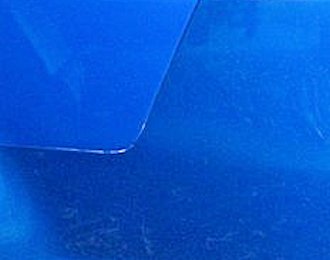Vehicle Paint Colour is off-shade

Vehicle Paint Colour looks different to original paint under normal or different light conditions.
Cause
1. Refinish colour not thoroughly stirred.
2. Original finishes faded or off colour due to weathering.
3. Original finishes do not match master standard supplied by motor company.
4. Wax coatings on the original finish are discoloured. This is a common condition on light colours.
5. Refinish colour not properly applied. This can be a result of poor or improper amount of thinner, wrong air pressure, spraying too wet or dry. These will greatly influence the final appearance of metallic colours in particular.
6. Insufficient number of coats.
7. Colour burned by hard wheel polishing.
8. Metamerism — colour match only under one type of light.
Prevention
1. Stir all colours thoroughly to incorporate all pigment.
2. Remove wax from adjacent sections with a wax and grease remover.
3. Light polishing of adjacent panels often helps to produce a colour match to newly painted section.
4. When applying metallics adjust spraying technique to effect colour match. Higher air pressure, greater distance between spray gun and panel, thin, dry coats give lighter shades. Lower air pressure and wetter coats give darker shades.
5. To prevent rings on spot jobs, overlap sufficiently on original finish. Use care to avoid cutting through when polishing.
6. A sure way to avoid colour mismatch is to spray a small metal panel with the materials to be used, and compare with the original finish before painting the job.
7. In severe cases, the new material should be tinted to match the old finish.
